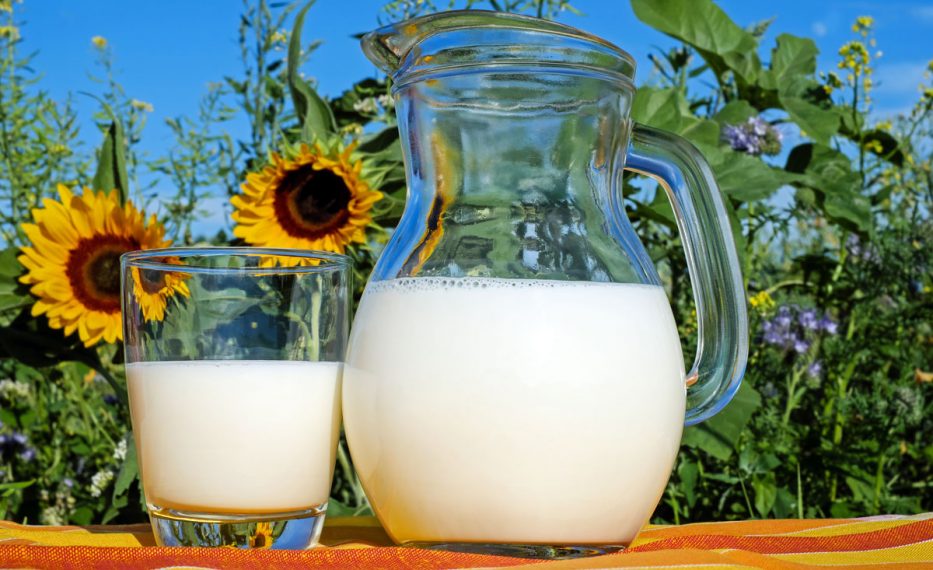For about the first 6 months of life, the only source of nutrition that is required by babies is breast milk or formula milk. After the age of 6 months, other foods need to be introduced (weaning) to provide essential nutrients that milk alone can no longer provide.
Gradually through the first year of life, milk becomes a smaller part of your child’s diet as the amount and variety of foods eaten is increased.
But after the age of one, how much milk do children actually need?
We all know that milk provides children with calcium, which is vital for growing bones and teeth, but what other nutrients does milk provide? And how much milk do children actually need at different ages and stages of development?
Milk and other dairy products are also an excellent source of protein, phosphorus and zinc; all of which are important for bone health.
Vitamin D is also vital for calcium absorption, so try to give your child oily fish at least once per week as well as a supplement if they are under the age of 5.
The table below gives you an idea of the amount of calcium that is required at different ages throughout childhood and the portion sizes of dairy products needed to achieve these calcium needs.
Daily Calcium requirements:
| Age | Calcium needs (mg/day) | Portion sizes (Calcium content) |
| Infants | 525mg | Breast milk or formula milk(+ weaning foods from 6 months) |
| 1-3 years | 350mg | 100ml whole / semi-skimmed milk (125mg) +80g yoghurt (160mg) + 15g* cheese (110mg) |
| 4-6 years | 450mg | 130ml semi-skimmed milk (160mg) + 100g yoghurt (200mg) + 20g cheese (150mg) |
| 7-10 years | 550mg | 150ml semi-skimmed milk (185mg) + 125g yoghurt (250mg) + 20g cheese (150mg) |
| 11-18 yearsMales | 1000mg | 250ml semi-skimmed milk (310mg) + 200g low fat yoghurt (320mg) + 45g cheese (380mg) |
| 11-18 yearsFemales | 800mg | 200ml semi-skimmed milk (250mg) +200g low fat yoghurt (320mg) + 30g cheese (250mg) |
*½ matchbox-size (1 matchbox-size = 30g portion of cheese)
As you can see from the table, after the age of one, calcium requirements drop as the period of rapid growth in infancy slows down and children do not need very much milk and other dairy products to provide them with their calcium needs. Remember cow’s milk should not be offered as a main drink until one year of age (continue breast milk or formula milk until then).
After the age of two, it is recommended that children change from whole milk to semi-skimmed milk if they are well grown and eating a variety of foods, otherwise they can remain on whole milk. Remember, whole or full fat milk, semi-skimmed milk and skimmed milk all contain the same amount of calcium.
After the age of 11 years, there is a time of rapid growth and calcium needs increase to enable the growth of long bones and to strengthen bones.
This is a particularly vulnerable age for bone health, as the latest National Diet and Nutrition Survey revealed that almost one in five (18%) of 11 to 18 year old girls were not getting enough calcium from foods.
What if your child does not like milk, what are other sources of calcium?
Oily fish with soft, edible bones (also a good source of vitamin D)
Sesame seeds
Fortified orange juices
Fortified soya milks, yoghurts and desserts
Tofu
Kale
Okra
Dried figs
Special circumstances:
If your child is on a milk-free diet – seek help from a Registered Dietitian, especially if your child cannot tolerate soya products, as a suitable milk substitute will need to be found to provide all the appropriate nutrients. Contact me to discuss.
Breastfeeding women require 1250mg Calcium per day (females 19 years and over require700mg per day), so this is an additional 550mg calcium per day. If a breastfeeding mum has been asked to avoid dairy products from her diet due to her infant’s symptoms, then I would advice the help of a Registered Dietitian, as careful and meticulous planning is needed to meet these additional requirements.
Any questions or comments? I would love to hear from you and welcome any suggestions for future topics!
P x





